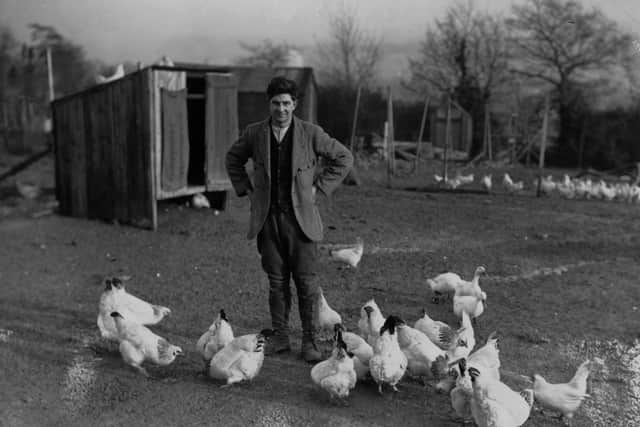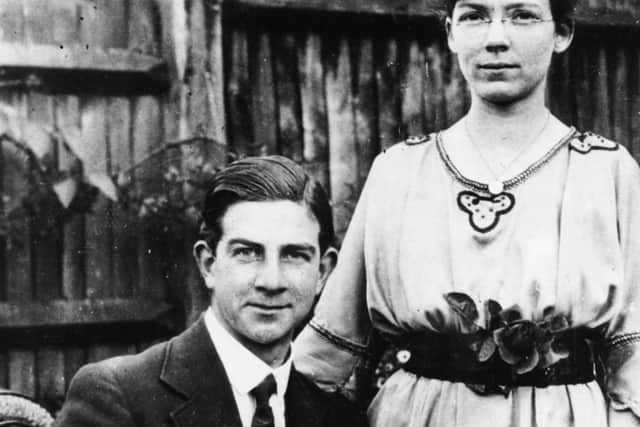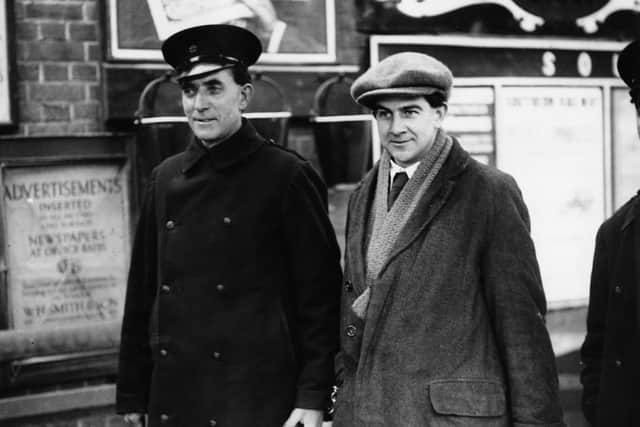Former Old Bailey judge from Sawdon edits Notable British Trials volume on 'chicken run murder' convict Norman Thorne
But his own life depended on whether he had murdered her or, as he claimed, she had killed herself before he disposed of the body in a panic.
The case has been on the mind of Paul Worsley KC, of Sawdon in North Yorkshire, a retired judge who has witnessed some truly sensational trials in his time.
Advertisement
Hide AdAdvertisement
Hide AdWhether it was as a barrister when he successfully prosecuted so-called ‘Wearside Jack’ - the man who years earlier pretended to be the serial killer eventually unmasked as Peter Sutcliffe - or as a judge at the Old Bailey overseeing terrorism cases, he has locked eyes with plenty of notorious figures.


Taking place almost a century ago, the case of Thorne pre-dated Paul’s legal career by decades. However, he has edited and written the introduction for the latest book of the Notable British Trials Series, which tells the story of Thorne's court case.
“It's almost like being present throughout the trial,” says Paul, who grew up in Hull. “Although nothing quite compensates for seeing the witnesses, obviously, but you've got the evidence they gave, the way in which the defence may have tried to dilute or destroy it, the closing speeches bringing it all together, the judge’s summing up on the law and reminding them of the salient facts and then the jury's verdict.
“It’s exciting stuff,” he says, particularly if the case happened during the days of capital punishment, when a trial “carried with it that extra frisson, if you like, of the rather macabre, grim judicial execution that followed the conviction of the murder.”
Thorne was a poultry farmer in Crowborough, Sussex.


Advertisement
Hide AdAdvertisement
Hide AdAround the time of Christmas 1922, he and Elsie Cameron, from London, became engaged to be married. However, he had met another woman, Elizabeth Coldicott.
At the trial, it was not disputed that Elsie died in Thorne's hut on the poultry farm on December 5, 1924 - most likely of shock from blows to the head and other injuries.
Nor was it denied that Throrne afterwards cut off her head and her legs, burying them under one of the chicken runs.
In the days after, Thorne even wrote letters addressed to Elsie, knowing she was dead.


Advertisement
Hide AdAdvertisement
Hide AdThe Crown told the jury that he murdered her; the defence’s case was that, while Thorne was absent from the hut, she took her own life, or had attempted to and died from the shock.
This line of defence is of interest to Paul, who says Thorne could have admitted that he did hit her but had no intention to seriously harm or kill, and the injuries were not serious enough themselves to end her life.
The evidence of eminent pathologist Sir Bernard Spilsbury - who, having inspected the body, rejected the suicide claims - was damning for Thorne.
Ultimately, he was found guilty of murder and sentenced to hang.


Advertisement
Hide AdAdvertisement
Hide AdIt was a decision which drew sorrowful remarks from Thorne’s famous fellow Crowborough resident, Sherlock Holmes author Sir Arthur Conan Doyle. He was quoted in American newspaper the Daily News as saying: “There is just one chance in a hundred that the man’s story is true; it is not probable, but possible. There is no way of putting things right if the man’s life is taken, and it would be a terrible thing if he were not guilty of murder.”
What does Paul think happened?
“I'm persuaded that there was no hanging as Thorne said there was, because there was just no evidence. And if she had hanged herself, why on earth chop the body up? It’s a pretty macabre thing to do, in a chicken hut late at night by the light of a fire” he says.
On April 22, 1925, the hangman Thomas Pierrepoint carried out the execution at Wandsworth Prison.
The story makes up 93rd volume of the Notable Trials Series, originally started by William Hodge, the Edinburgh publishers, in 1905. The series included accounts of famous trials such as that of playwright Oscar Wilde. Hodge ceased active trading in 1959 but in 2017 the fortunes of the series were revived when Mango Books in London obtained the licence to resume publication.
Advertisement
Hide AdAdvertisement
Hide AdPaul, 75, read law at Oxford before he was called to the Bar in 1970 and drove around the circuit in his Morris Minor.
He first worked from chambers in Leeds and in 1990 he was appointed a Queen’s Counsel (now referred to as King’s Counsel).
Later, during his time as a judge, he served at the Old Bailey for 10 years until 2017. He says it was “an amazing experience because you have the best, I think, of the prosecutors and defenders, the most serious of the cases - murder, terrorism, huge drug importations and so forth. And at lunchtime, the sheriffs would entertain the judges and they would bring guests, so everyone from Stirling Moss to Mary Barry to some of the royals to politicians, the military would come for lunch. And that would be a wonderful diversion from the task of summing up a murder case.”
Paul has written fiction too. The Postcard Murder: A Judge’s Tale came after two children’s books, The Mango Monkey and The Adventures of Cato the Cayman Cat, which were written with his grandchildren in mind.
Advertisement
Hide AdAdvertisement
Hide AdAnd he is proud to say that his children, Charlotte and Nicholas, are now King’s Counsel and, like him, came up through chambers in Leeds. Dinner time conversations, then, could also be pretty macabre in the Worsley household?
He laughs. “Err…yes.”
The Notable British Trials Series volume 93 is published by Mango Books on September 15 and is available for pre-order.